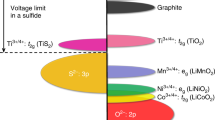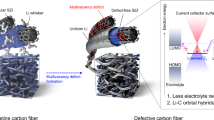Abstract
RECENT progress in the field of thermionic emitters has largely been directed towards obtaining continuous current densities higher than those which can be obtained from oxide cathodes with reasonable lives. Examples of this trend are the L cathode1, the impregnated tungsten cathode2 and the moulded nickel–barium carbonate layer cathode3.
This is a preview of subscription content, access via your institution
Access options
Subscribe to this journal
Receive 51 print issues and online access
$199.00 per year
only $3.90 per issue
Buy this article
- Purchase on Springer Link
- Instant access to full article PDF
Prices may be subject to local taxes which are calculated during checkout
Similar content being viewed by others
References
Lemmens, Jansen and Loosjes, Philips Tech. Rev., 11, 341 (1950).
Levi, Record of Inst. Radio Eng. Convention, 1953, Pt. 6, 40 (1953).
MacNair, Hannay and Lynch, J. App. Phys., 24, 1335 (1953).
Author information
Authors and Affiliations
Rights and permissions
About this article
Cite this article
BECK, A., CUTTING, A., BRISBANE, A. et al. A New Type of Diffusion Cathode. Nature 174, 1010–1011 (1954). https://doi.org/10.1038/1741010a0
Issue Date:
DOI: https://doi.org/10.1038/1741010a0
Comments
By submitting a comment you agree to abide by our Terms and Community Guidelines. If you find something abusive or that does not comply with our terms or guidelines please flag it as inappropriate.



